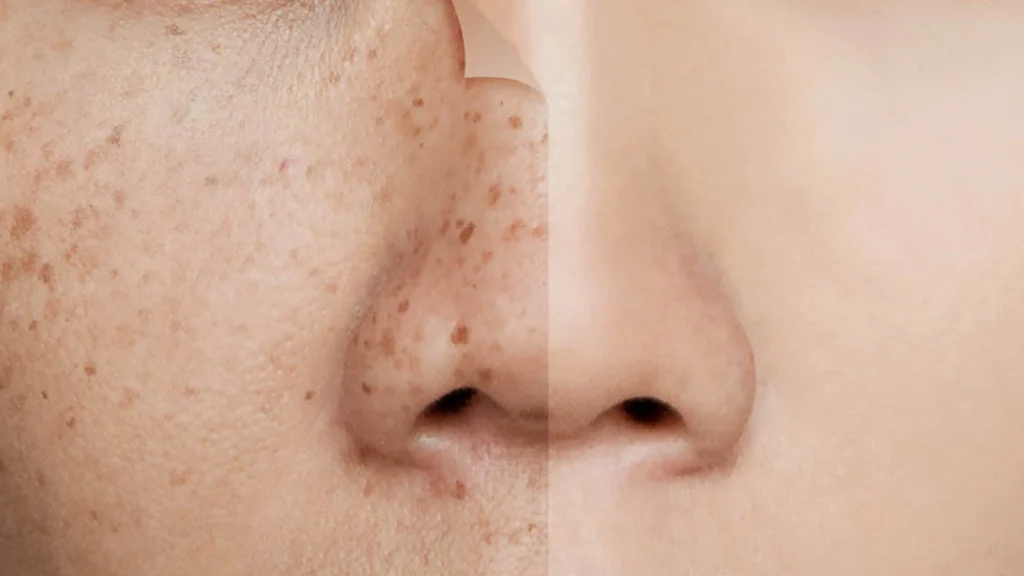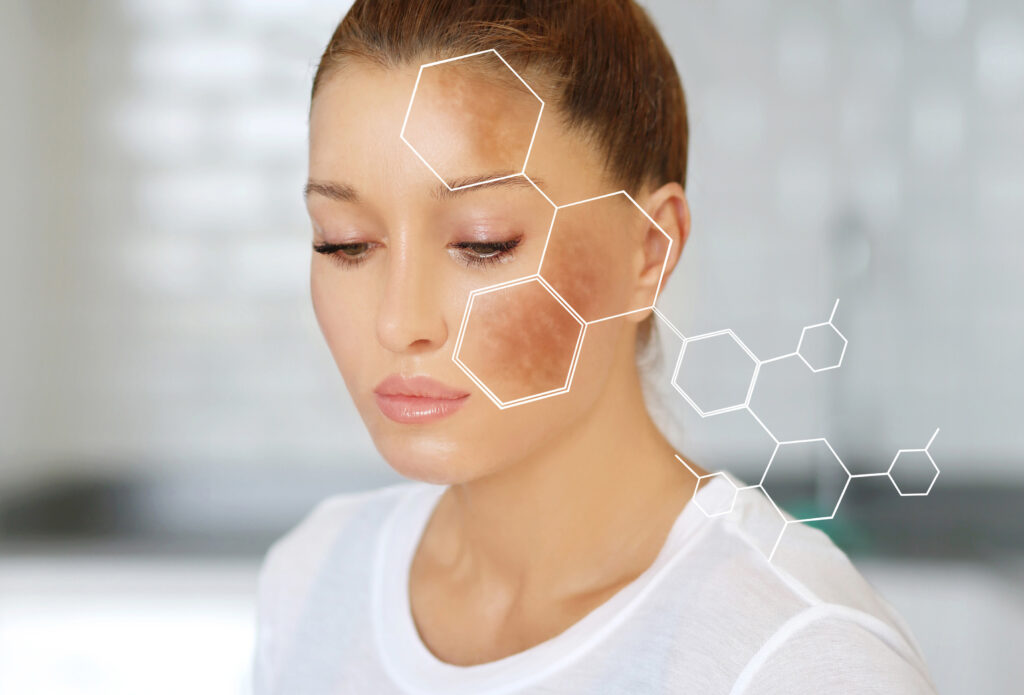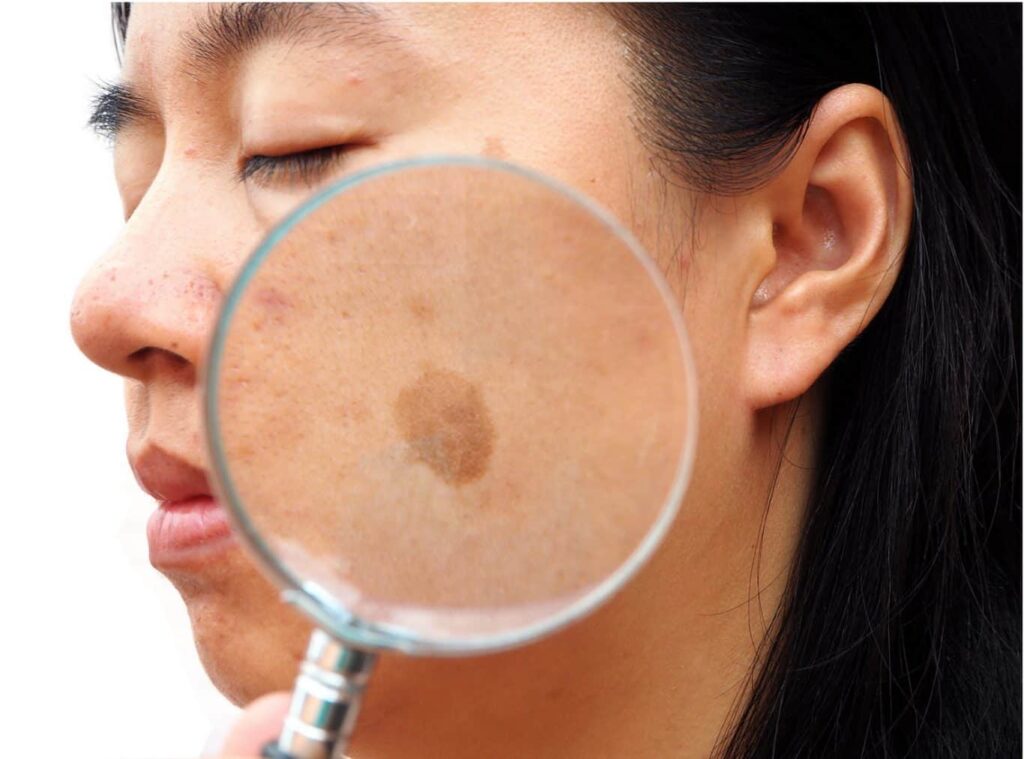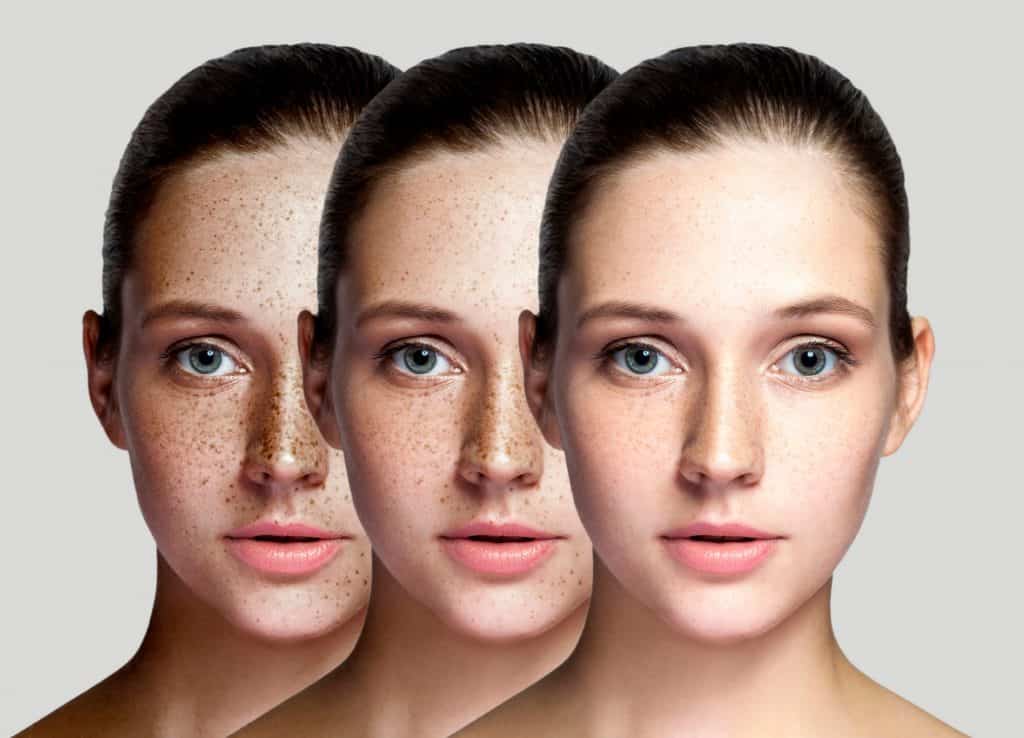What are the causes of Skin pigmentation? Hyperpigmentation can be caused by sun exposure, certain medications, pregnancy, and illnesses including Addison’s disease. Topical products are one type of treatment.
Causes of skin pigmentation
Causes of skin pigmentation are numerous, including rashes, infections, birthmarks, and pigmentation disorders, which can cause changes in the pigmentation of the skin. Melanin production may be elevated, leading to darker areas, for instance.
Melanin, the pigment that gives skin color, is found in the skin. Skin with less melanin is lighter, whereas skin with more melanin is darker. Melanin is also in charge of the color of your eyes and hair.
Because the discolored skin patches are not the same as the person’s usual skin tone, they are easily observable. They may be a different color, like red, gray, or blue, or lighter or darker.
If therapy is required, individuals experiencing this symptom must be aware of the reason behind their discolored skin patches.
This article discusses which of the many reasons discolored skin patches need treatment and examines them all.

Read more: Skin problems
Top 6 common Causes of skin pigmentation
The most common causes of skin pigmentation, such as the following:
Vitiligo
Your skin will lose melanin, or pigment, in some areas as a result of this disorder. It results from the death or malfunction of the melanin-producing cells. The interior of your lips and your hair may also be impacted by vitiligo. While there isn’t a cure, there may be therapy. This covers prescription drugs, phototherapy, and operations.
Cancer
Skin discoloration may occur during radiation therapy, chemotherapy, or surgery. It may also become apparent as a side effect of painkillers or following an allergic response to an injection. Your skin might appear red, bruised, or darker. Usually, these changes disappear after your therapy is over.
Sunspots
The body produces more melanin in order to protect the skin from extended exposure to sunlight.
This may result in dark patches or areas on the skin known as sun spots or age spots.
Dermatitis (Eczema)
Also referred to as atopic dermatitis, this illness can result in red, itchy, dry, and cracked skin areas. Occasionally, these areas could leak before crusting over. Although the exact origin of eczema is unknown, those with asthma, hay fever, and other allergies are more likely to get it, and it can run in families.
Contact Dermatitis
This kind of eczema develops when your skin becomes irritated, or you are allergic to anything. Some soaps, laundry detergents, cosmetics, and poison ivy are a few examples. The skin will become red, rough, bloated, and burn or tickle. Plus, it will begin to peel.
Trauma
Patches that are brighter or darker than your natural skin tone might result from skin damage caused by a burn, blister, or infection. On its own, things normally get better. However, you may use certain treatments to get rid of dark spots more quickly. Wearing sunscreen is important since the sun’s UV radiation might impede the healing process.

Read more: Most Common Types of Skin Diseases
What is the diagnosis and treatment for skin pigmentation?
You can get the reason for your skin pigmentation diagnosed by a dermatologist. To ascertain the cause, they will want to see your medical history and do a physical examination. A skin biopsy can help identify the reason in some situations.
Certain forms of hyperpigmentation may be treated with topical prescription medicine. Usually included in this prescription is hydroquinone, which lightens skin.
However, chlorosis, or skin darkening, can result from using topical hydroquinone for an extended period without stopping. For a dermatologist to correctly advise you on how to take the drug without experiencing any side effects, it is thus recommended to use topical hydroquinone only while under their care.
Applying topical retinoids helps to brighten the skin’s dark patches.
It may take several months for either of these drugs to brighten dark parts.
Sunscreen use is another aspect of home care. The single most crucial element in addressing the majority of hyperpigmentation causes is sunscreen. Seek out:
- A sunscreen that physically blocks, ideally with zinc oxide as the primary active component.
- A minimum of 30 to 50 SPF.
- Wide coverage of the spectrum.
- Apply sunscreen daily. If you’re in the sun, reapply it every two hours; if you’re perspiring or swimming, use it more regularly.
There are other skin conditions, such as melasma, where exposure to light may contribute to the hyperpigmentation’s persistence.
If that’s the case, search for a mineral sunscreen that contains iron oxide as well, as it can partially filter visible light.
Utilize every day. Put on SPF-infused clothes that block the sun.
Purchase apparel with SPF online.
If necessary, use one of these supplements:
FoliPrime
With the breakthrough oil FoliPrime, you can keep your scalp and hair healthy. Natural components including:
- Lemon peel
- Castor oil
- Niacin
- Biotin
- Stinging nettle
- Hyaluronic acid
- Turmeric
- Cayenne pepper
- Zinc oxide
- Argan oil
- Tea tree
- Olive oil
- Almond oil
These are blended in a special way. This potent mixture contains vital vitamins and minerals that are meant to preserve and nurture your scalp and hair.

Read more: Most Common Types of Skin Diseases
Hydrossential
Emma Smith created the ground-breaking Hydrossential solution, which enables women to keep immaculate, wrinkle-free skin.
Natural plant extracts from Gotu Kola, Aloe Barbadensis, Japanese Witch Hazel, Jojoba Oil, and Camelia Sinensis are used in the composition. Safe and devoid of toxins and hazardous substances, Hydrossential is made in the USA at a facility that has received FDA approval and GMP certification.
Women may take back their beauty and get a radiant complexion with Hydrossential’s natural components.
Kerassentials
This ground-breaking therapy is intended to combat fungal resistance and promote healthy skin and nails. Certain premium oils and minerals, including:
- Organic flaxseed oil
- Lavender oil\
- Almond oil
- Tea tree oil
- Lemongrass oil
- Aloe vera
- Tocopheryl acetate
- Udecylenic acid
These are combined in Kerassentials.
With no additives or stimulants, this natural solution is easy to use, plant-based, and non-GMO. It aids in skin soothing, infection prevention, and anti-aging.
Depending on the source of your hyperpigmentation, your doctor may also recommend chemical peels or laser therapy to lessen it.

